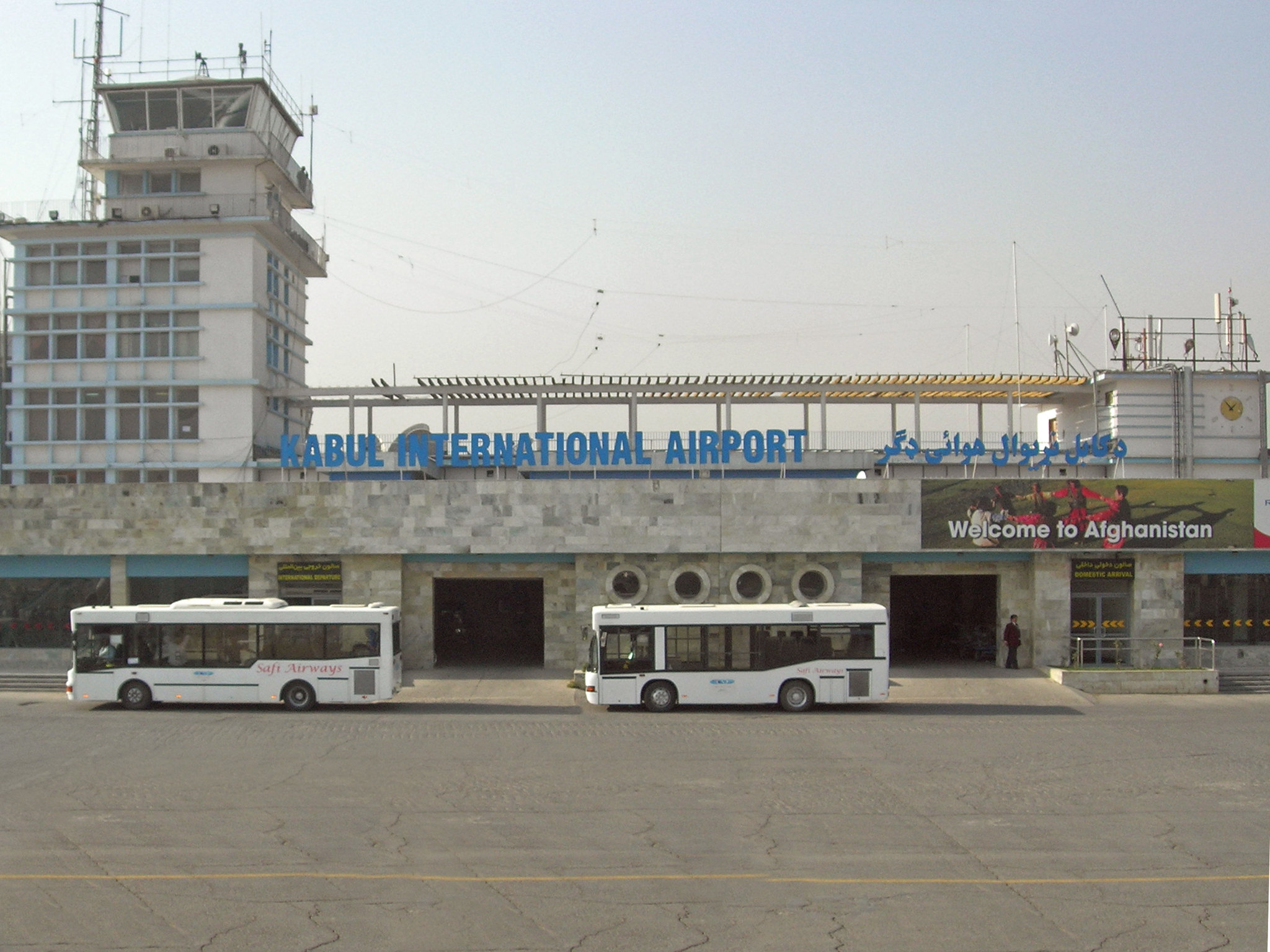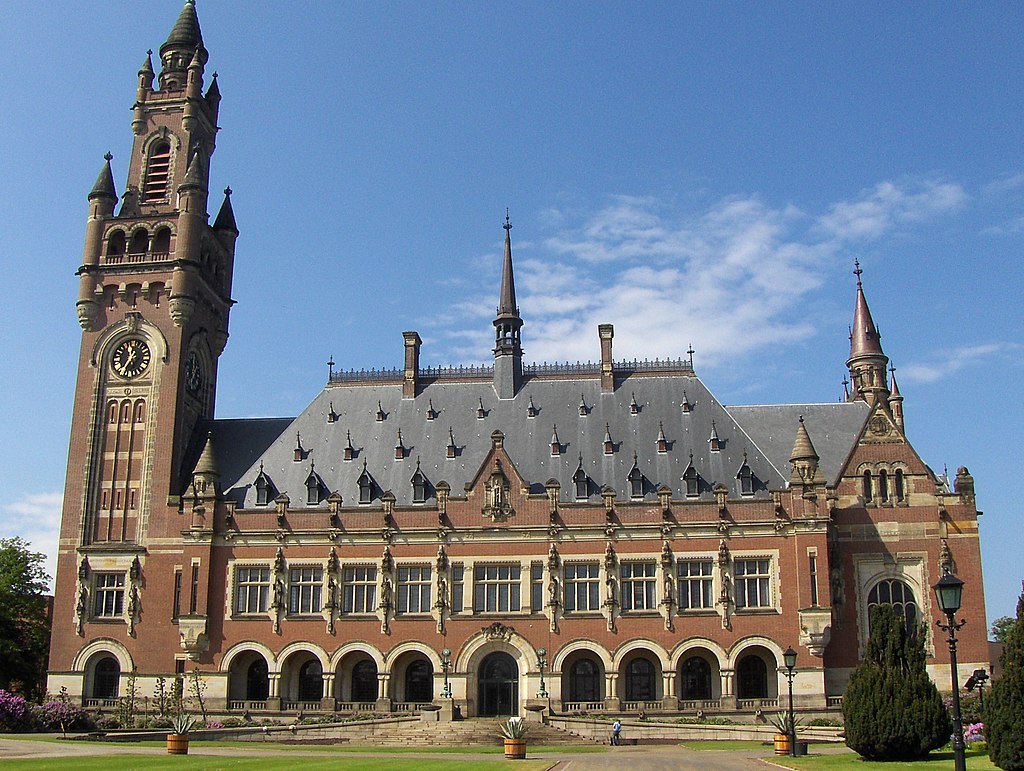Special Immigrant Visas for the United States’ Afghan Allies: Lessons Learned from Promises Kept and Broken
As Afghans rush to flee the country in the wake of the U.S. withdrawal, what tools can the U.S. government use to help them?

Published by The Lawfare Institute
in Cooperation With

What Happened
As thousands of Afghans rushed to the Kabul airport to flee the country out of a palpable fear of what Taliban rule will bring, public attention has focused on what the U.S. can do to get them out. Much of the discussion has concentrated on the Special Immigrant Visa (SIV) program, which was created by Congress in 2009 as part of legislation aimed at supporting Afghan allies. But the SIV program is not the only option available to Afghans seeking to flee the country as the U.S. withdraws—the president can also act pursuant to his own authorities to relocate individuals on an emergency basis.
Previous U.S. Responses to Refugee Crises
The current situation in Afghanistan is not without historical precedent. Earlier U.S. military interventions have also led to refugee crises, which the U.S. has tried to mitigate through relocation campaigns. In some instances, as with the SIV program, the relocation efforts were initiated by Congress; in others, the executive branch exercised its own authorities. Three pertinent examples include Vietnam, Iraq and Kosovo.
In 1975, the U.S. Congress passed the Indochina Migration and Refugee Assistance Act, which earmarked $405 million for a two-year resettlement program to evacuate and assist refugees from South Vietnam and Cambodia. The law was soon amended to include thousands of refugees from Laos as well. Initially, many of the refugees were transported to Guam, and from there to temporary immigration centers in Florida, California, Arkansas and Pennsylvania.
In 1996, under Operation Pacific Haven, using his authorities under the Migration and Refugee Assistance Act, the president authorized a program to evacuate Iraqi Kurds who had assisted the U.S. over the course of its five years of operations in Iraq. In Operation Pacific Haven, the U.S. armed forces airlifted to Guam three successive groups of Iraqi Kurds who had fled to Turkey after threats by Saddam Hussein against those who had assisted the U.S., as well as against organizations receiving financial support from Western agencies. Once in Guam, the refugees remained on a U.S. military base for three to six months, during which time they underwent an expedited asylum process coordinated by lawyers, the Immigration & Naturalization Service (INS), the State Department, and the Department of Health and Human Services. Throughout the refugees’ time in Guam, the U.S. provided housing, food, medical care and other necessities. Operation Pacific Haven successfully processed three successive groups of refugees between Sept. 16, 1996, and April 16, 1997; each group was processed within an average of 90 to 120 days. The operations on Guam cost approximately $10 million.
In 1999, the White House announced its plan to bring 20,000 refugees from Kosovo to the United States. The program was authorized by a presidential determination, again pursuant to the Migration and Refugee Assistance Act of 1962. The program, known as Operation Open Arms or Operation Provide Refuge, was headed by the Department of Health and Human Services and supported by the Department of Defense. To determine which 20,000 individuals would benefit from the operation, the U.S. selected from among Kosovar Albanians who had fled to refugee camps in Macedonia and prioritized those refugees who had family in the U.S. or who were at risk because of illness or other special circumstances.
The SIV Program
SIVs are available to individuals who have worked as translators, interpreters or other professionals employed by or on behalf of the U.S. government in Afghanistan, offering them a direct pathway to a green card. For more than 10 years, the SIV program has allowed Afghan nationals who worked with the U.S. military to seek protection by immigrating to the United States. The program has long faced criticism for its severe delays. Even before the U.S. withdrawal began, Afghan SIV applicants waited an average of two to three years for their applications to be processed, despite the fact that Congress mandated that the process take no more than nine months. As of late June, it was estimated that only 16,000 Afghan SIVs had been issued since 2014, even though Congress had authorized a total of 26,500 visas during that time.
Nevertheless, in recent days, there have been some potentially promising developments. On Aug. 13, the first flight of SIV applicants landed in the U.S.; this group had completed most of the background process required for the SIV. A second group arrived in Fort Lee, Virginia, on Aug. 16. At that point, it had been estimated that around 2,000 SIV applicants had already been evacuated since July but that there are more than 50,000 SIV candidates still in Afghanistan. On Aug. 18, the Pentagon announced that the U.S. had evacuated 2,000 people (including 325 American citizens) from Afghanistan in 18 flights over a 24-hour period. That same day, Pentagon spokesman John Kirby said the U.S. military was working toward its goal of evacuating a maximum of 5,000 to 9,000 people a day. According to Garry Reid, the director for defense intelligence, the U.S. plans to transport these individuals to military bases in the U.S. such as Fort McCoy in Wisconsin and Fort Bliss in Texas. The U.S. Departments of State and Defense pledged to “accelerate the evacuation of thousands of Afghans eligible for U.S. SIVs.”
Those who do not qualify for the SIV program, but have nonetheless helped the U.S. during its time in Afghanistan, can take advantage of a “Priority 2” or “P2” designation, which was created earlier in August. The P2 designation is available to those who, unlike their Priority 1 (P1) counterparts, did not meet the minimum “time in service” eligibility requirement for the SIV program but still “work or worked as employees of contractors, locally-employed staff, interpreters/translators” for the U.S. government, U.S. or NATO forces; were employees of a U.S. government-funded program or project in Afghanistan supported through a U.S. government grant or cooperative agreement; or were employed in Afghanistan by a U.S.-based media organization or nongovernmental organization. The goal of the P2 program is to expand access beyond the SIV program to those whom the State Department has designated as eligible “by virtue of their circumstances and apparent need for resettlement.” To qualify for P2 status, however, Afghans must get themselves out of Afghanistan, as the U.S. cannot start processing them as refugees until they are in another country. But the U.S. on Monday announced that it will not be offering relocation flights for P2 applicants at this point.
U.S. History With the Special Immigrant Visas for Afghans
The U.S. response to the recent crisis in Afghanistan builds on existing legislation. In 2009, Congress passed the Afghan Allies Protection Act of 2009 (AAPA), to expand the preexisting SIV program for Afghan citizens, authorizing 1,500 visas annually for Afghan citizens who provided “faithful and valuable” service to the U.S. government or allied forces, and who face “an ongoing serious threat as a consequence of [their] employment by the United States Government.” The AAPA provides that in order to qualify for an SIV, the U.S. government must verify that the applicant (a) is an Afghan citizen; (b) meets the employment eligibility requirements (at least one year of employment between October 2001 and December 2020 for or on behalf of the U.S. government in Afghanistan or the International Security Assistance Force or a successor mission if the applicant applied prior to Sept. 30, 2015, or at least two years under the same conditions if the applicant applied after September 2015); (c) provided “faithful and valuable service to the U.S. government; (d) is experiencing an “ongoing serious threat” as a result of the applicant’s service to the U.S.; (e) is otherwise admissible to the U.S. under the Immigration and Nationality Act; and (f) does not pose a national security threat to the United States.
Though praiseworthy in theory, the AAPA was inefficiently put into practice. Most notably, the process was characterized by extreme delay, so much so that Congress got involved again. In 2013, Congress amended the AAPA, reauthorizing the program beyond its initial 2013 deadline since only a small fraction of the 9,000 applications that had been authorized had been approved. The amendment required that the U.S. government “improve the efficiency by which applications for special immigrant visas … are processed so that all steps under the control of the respective departments incidental to the issuance of such visas, including required screening and background checks, should be completed not later than 9 months” after the applicant’s materials are submitted.
Nevertheless, delays in processing and adjudicating SIV applications continued and continue to this day. As of late June, there were more than 18,000 applications in the pipeline, impacting a potential total of 53,000 individuals. Many have waited years without receiving a decision, facing violence, death threats, and harassment to themselves and their family members. Some have even been killed while awaiting their SIVs. There are a host of lawsuits against the State Department and other government agencies challenging the delay in processing these applications. A prominent example is Afghan and Iraqi Allies Under Serious Threat Because of their Faithful Service to the United States.
The government’s response in these lawsuits and in public remarks cite low program staffing, high caseload volume, the need to conduct rigorous and lengthy background checks, a prioritization on the higher tiers causing longer wait times for those at lower tiers of the application process, and the suspension of routine visa services at all U.S. embassies and consulates in March 2020 due to the coronavirus pandemic. Its response has also included legal arguments that Congress’s use of the word “should” in the amendment regarding the timeline is solely an efficiency benchmark or a “precatory expression of Congressional desire, rather than a legal requirement enforceable by the judiciary.”
While the State Department and the Department of Homeland Security are still working through the backlog of SIV applications already in process, Congress passed legislation that aims to provide further support to Afghan allies by modifying the existing requirements for obtaining SIVs. On July 30, the White House signed into law the Shaheen-Ernst Bill to protect Afghan allies through the SIV program. The legislation increases by 8,000 the number of authorized visas, changes the employment requirement from two years to one year, postpones the required medical exam until the applicant and their family have arrived in the U.S., removes the “sensitive and trusted” requirement, and provides for special immigrant status for certain surviving spouses and children of those applicants murdered while waiting for their SIV approval.
The Use of Parole as an Alternative to SIV
However, the SIV program is not the only option available to Afghans seeking entry to the United States: They may also qualify for parole status, which allows them to enter the country without formal adjudication of their immigration status. The parole authority is derived from the Immigration and Nationality Act, which empowers the secretary of homeland security to permit individuals to enter the U.S. if the secretary deems it necessary “for urgent humanitarian reasons or significant public benefit.” Several administrations have employed parole to bring in different groups on an emergency basis. Parole allows for the U.S. government to grant an individual “permission to enter and remain temporarily in the United States.” Parole does not, however, confer on individuals who receive it any formal immigration status; eligibility for a status that would allow them to stay in the country on a more permanent basis is determined after their arrival in the United States.
There are many categories of parole. One relevant category is Humanitarian Parole for Persons Outside the United States. This category allows for the U.S. to grant individuals emergency entry to the U.S. based on the dangerous conditions in their nation. Additionally, the U.S. has utilized parole through a category known as Refugee-Related Parole Programs (RRPPs). RRPPs have proved particularly effective as the ultimate backup plan when an individual cannot gain entrance to the U.S. under more traditional refugee programs like SIV. Starting in the 1980s through 2017, the U.S. used RRPPs for thousands of Haitians and Cubans who came to the U.S. by boat. The U.S. also employed an RRPP for religious minorities in the Soviet Union. Under this parole program, refugees did not need to provide as much information as they would under the more standard immigration programs to prove their refugee status. In 2014, the U.S. government specifically created a RRPP for minors from Central America who could not qualify for refugee status under other programs.
These examples show that the Biden administration could create a parole program that does not force Afghans to wait for the backlog issues with SIV and does not create as rigorous of an initial review for Afghans, who are immediately fleeing for their lives. Ultimately, regardless of the category of parole, all allow individuals to stay in the U.S. temporarily before they can receive a concrete immigration status. To protect Afghans in need of immediate assistance, the U.S. government can use parole to bypass the bureaucracy of the SIV program.
Additional Alternatives to SIV
While the U.S. works to evacuate and assist as many Afghans as possible through the SIV program, there may be additional alternatives to explore. The so-called Guam Option could serve as an alternative for Afghans who cannot qualify under the SIV program. This alternative would allow the president to exercise his own authority to evacuate Afghans, rather than needing to rely on new or amended legislation.
The moniker “Guam Option” was first used in connection with a program that the Ford administration employed in 1975 to evacuate about 130,000 Vietnamese refugees. The program flew the refugees to Guam first, where they faced an initial review. After clearing the first review, refugees then went to the U.S. mainland for a more extensive review. The U.S. used similar programs for Iraqi Kurds in 1996, when the U.S. flew 6,600 Iraqi Kurds to Guam, where their asylum applications were processed on an expedited basis and many of the refugees were ultimately transferred to the United States. In 1999, the U.S. again repeated a similar process, with 20,000 Kosovar Albanians. The U.S. transported the Kosovar Albanians to Fort Dix, New Jersey, to determine the refugee status of the Albanians. The Center for American Progress argued for using this plan in 2009 with Iraqis who assisted the U.S., but the U.S. failed to implement the program.
Another option, proposed by the International Refugee Assistance Program, would provide entry to more Afghans through the U.S. Refugee Admissions Program (USRAP). Such an initiative would require the U.S. “to dramatically expand the quota of refugee admissions.” In order to increase the quota, the U.S. would need to handle backlogs in processing. Under USRAP, the U.S. could make certain groups of Afghans “priority groups,” out of necessity for humanitarian protection of these groups. Vox has noted that any new program would likely face bureaucratic hurdles due to the government’s inability to keep up with the large number of refugees.
Conclusion
As recent days have shown, the U.S. started the withdrawal from Afghanistan with insufficient infrastructure in place to support all the individuals who would need refugee status on an urgent basis. Legally, the U.S. has several options to expand its capacity to protect more Afghans seeking to flee. As the situation deteriorates in Afghanistan, the U.S. will need to quickly consider the different options and employ the most workable ones to protect the lives of Afghans.






